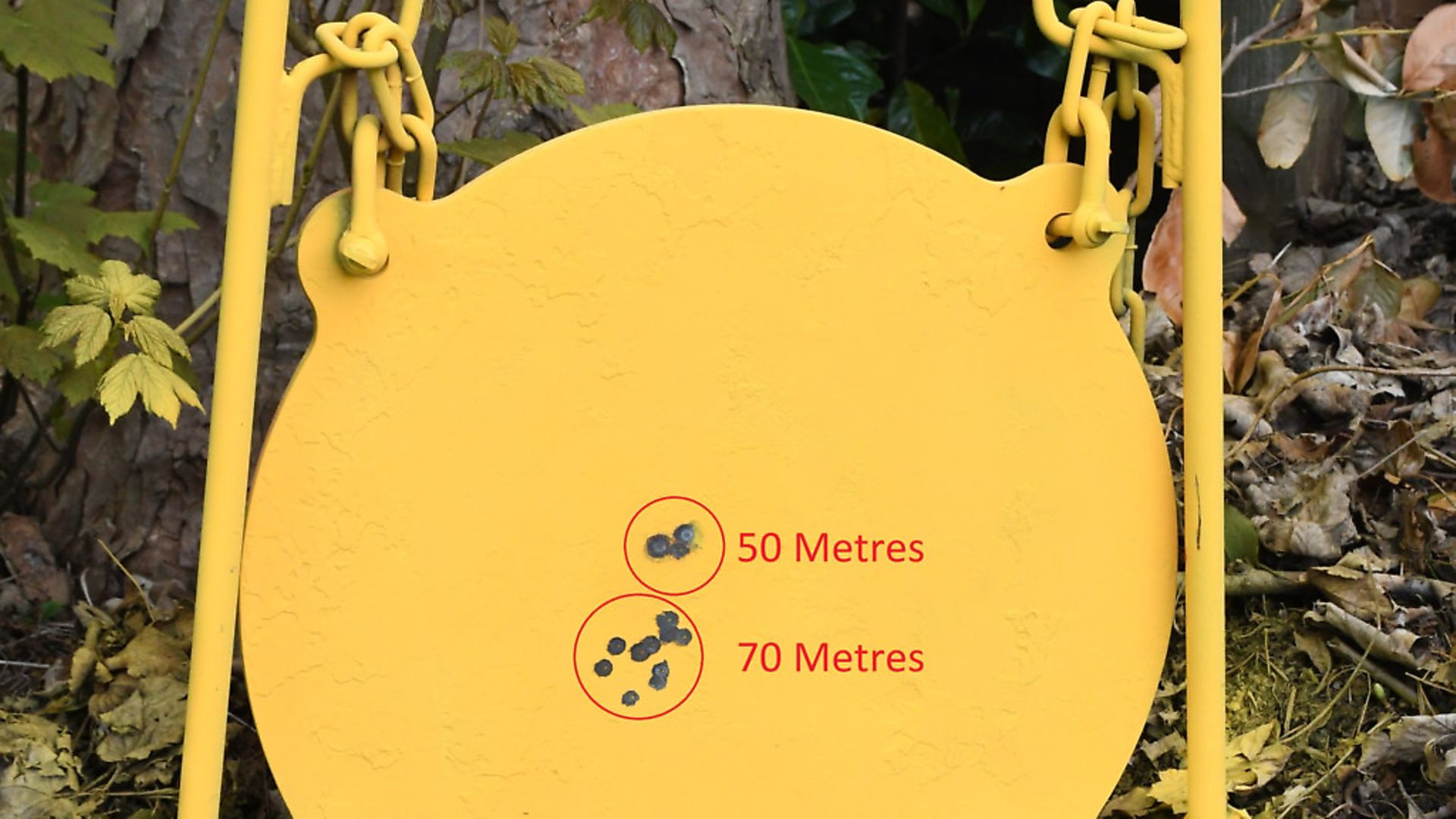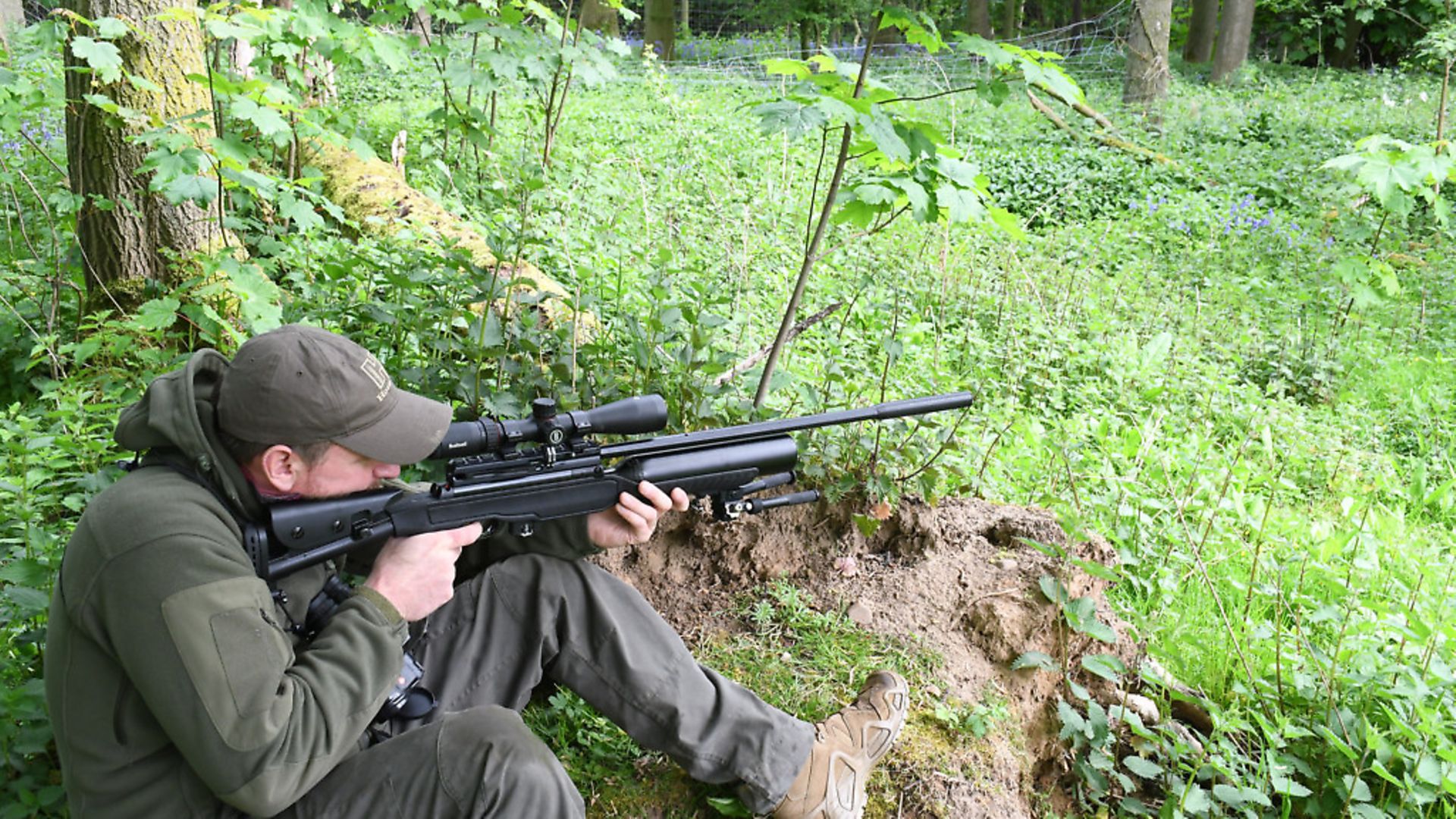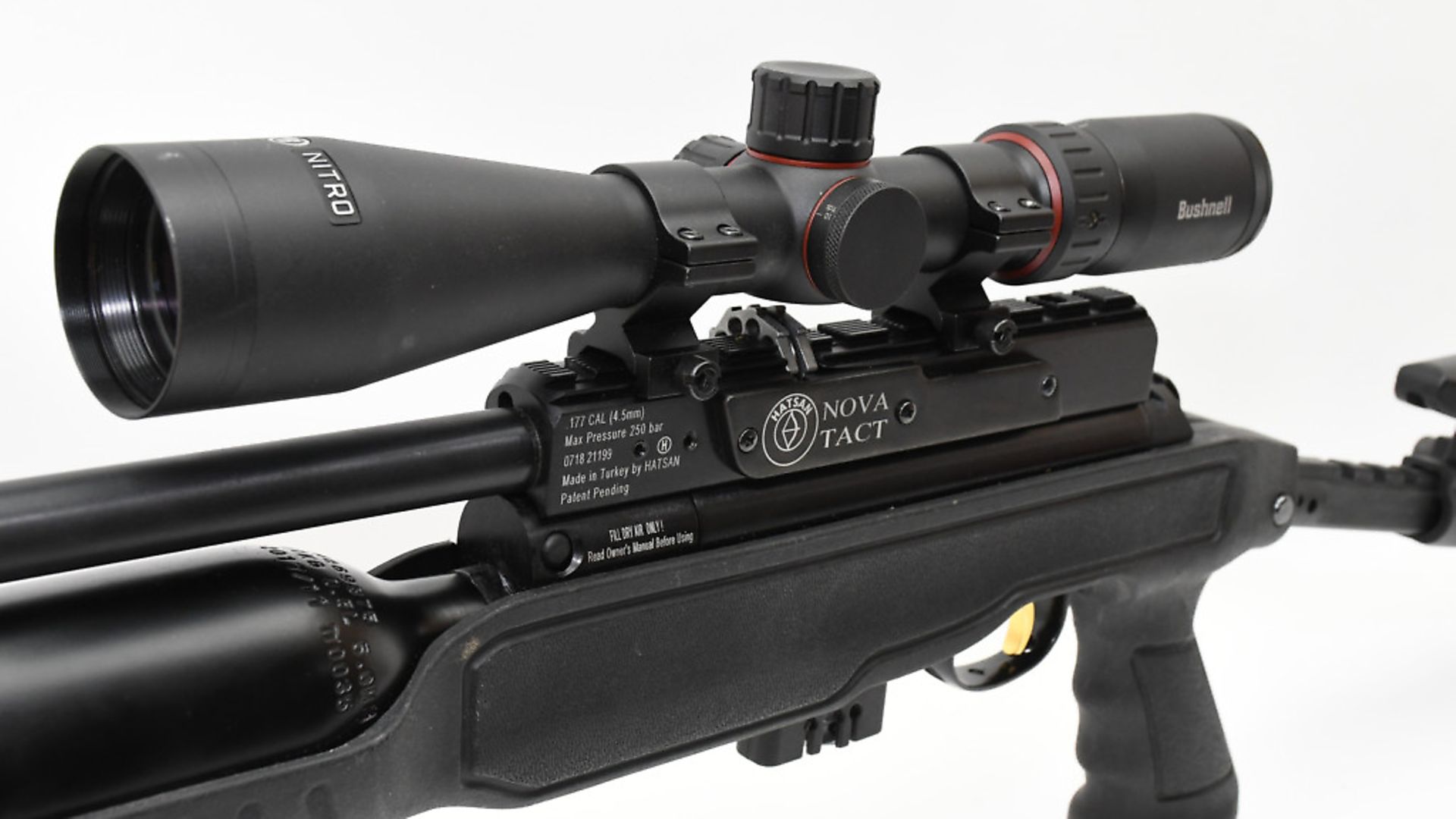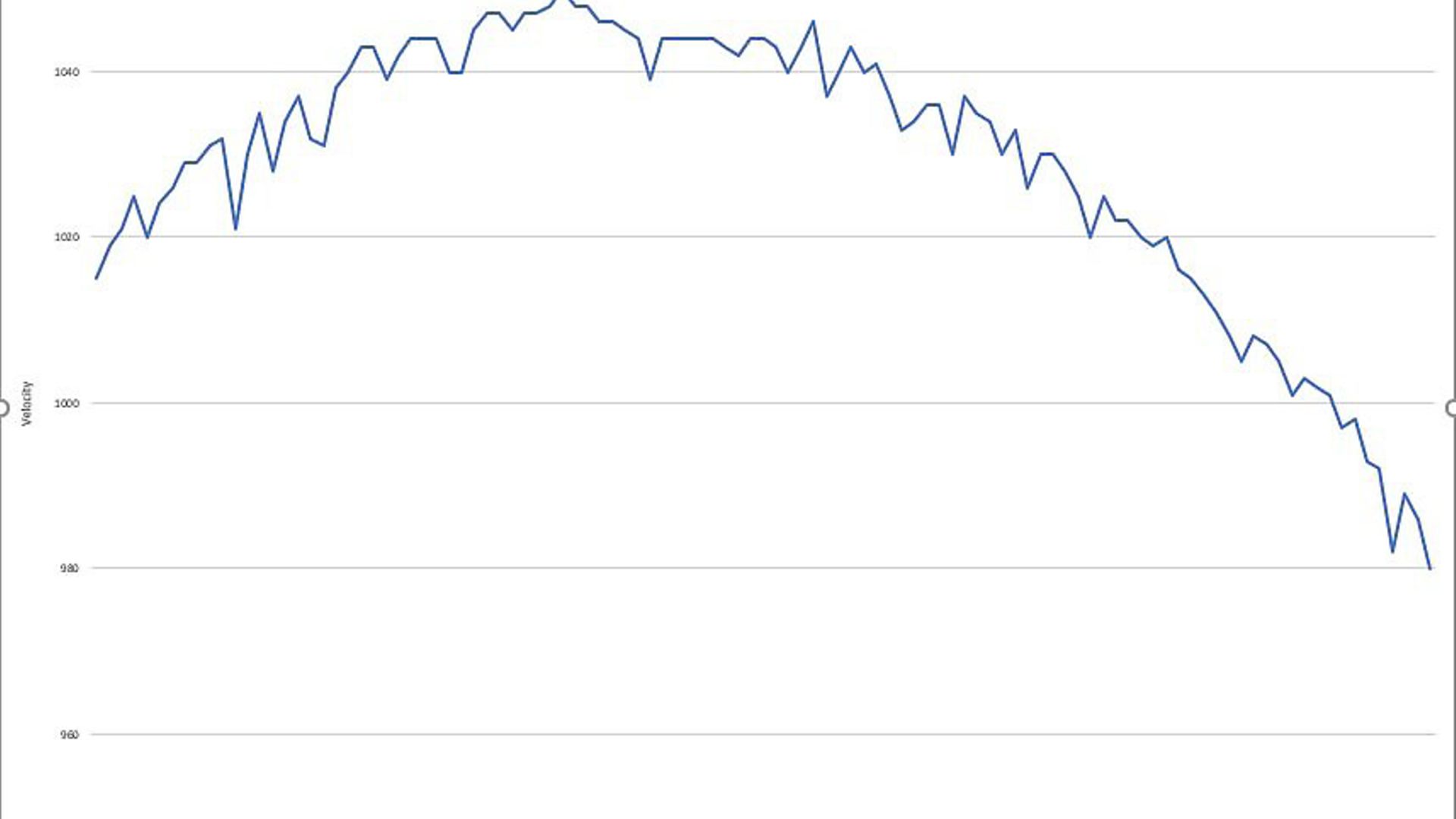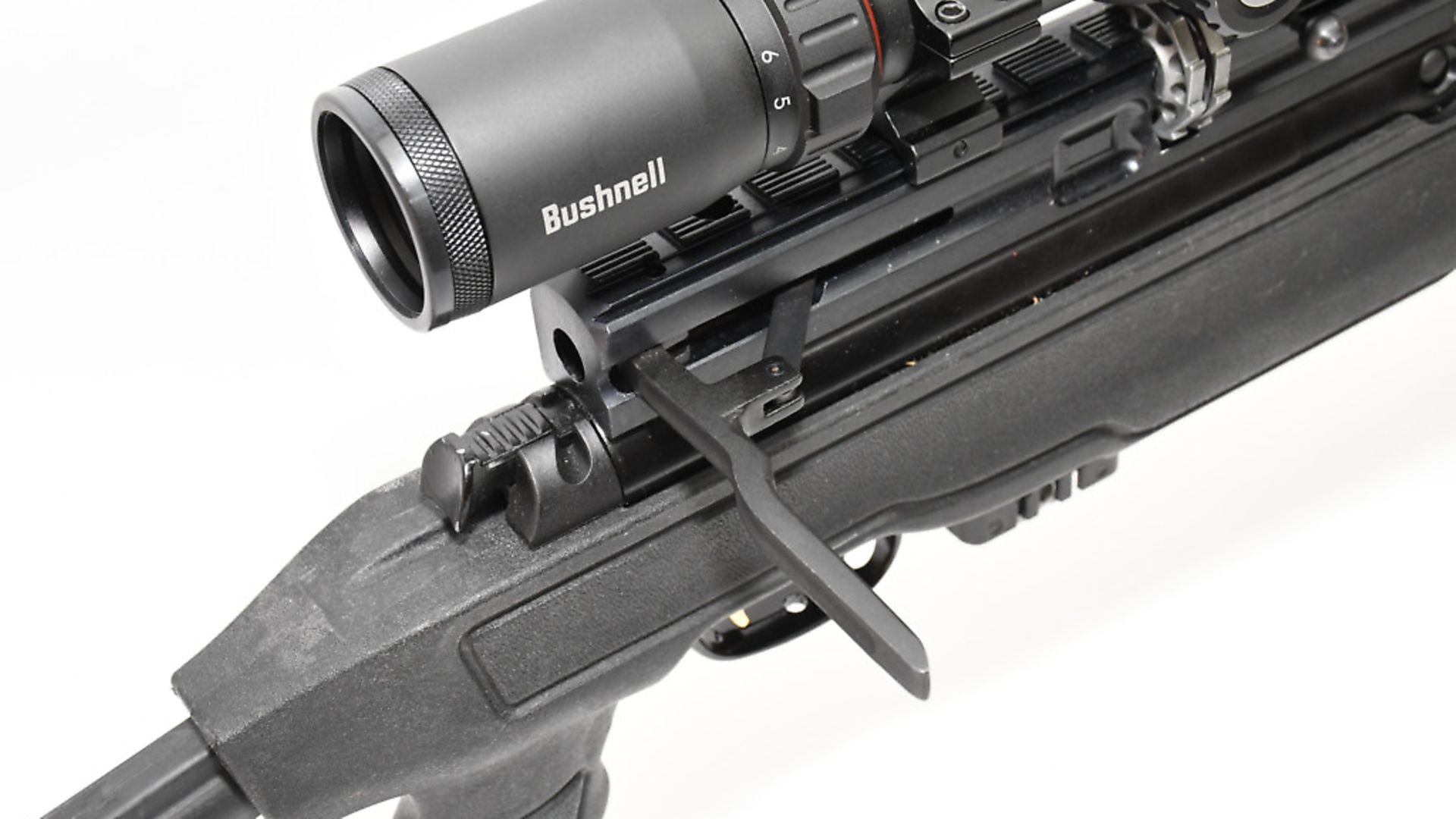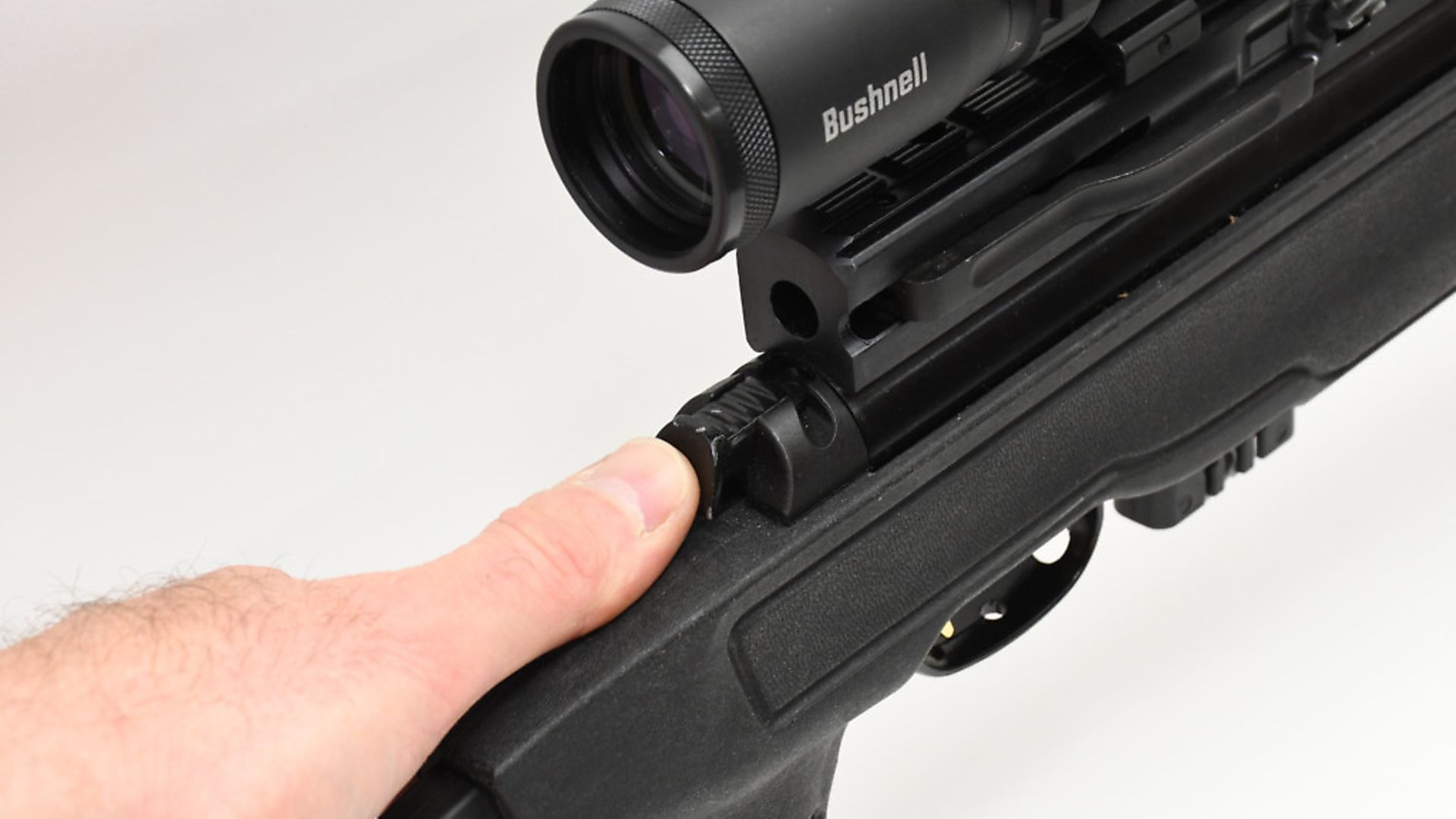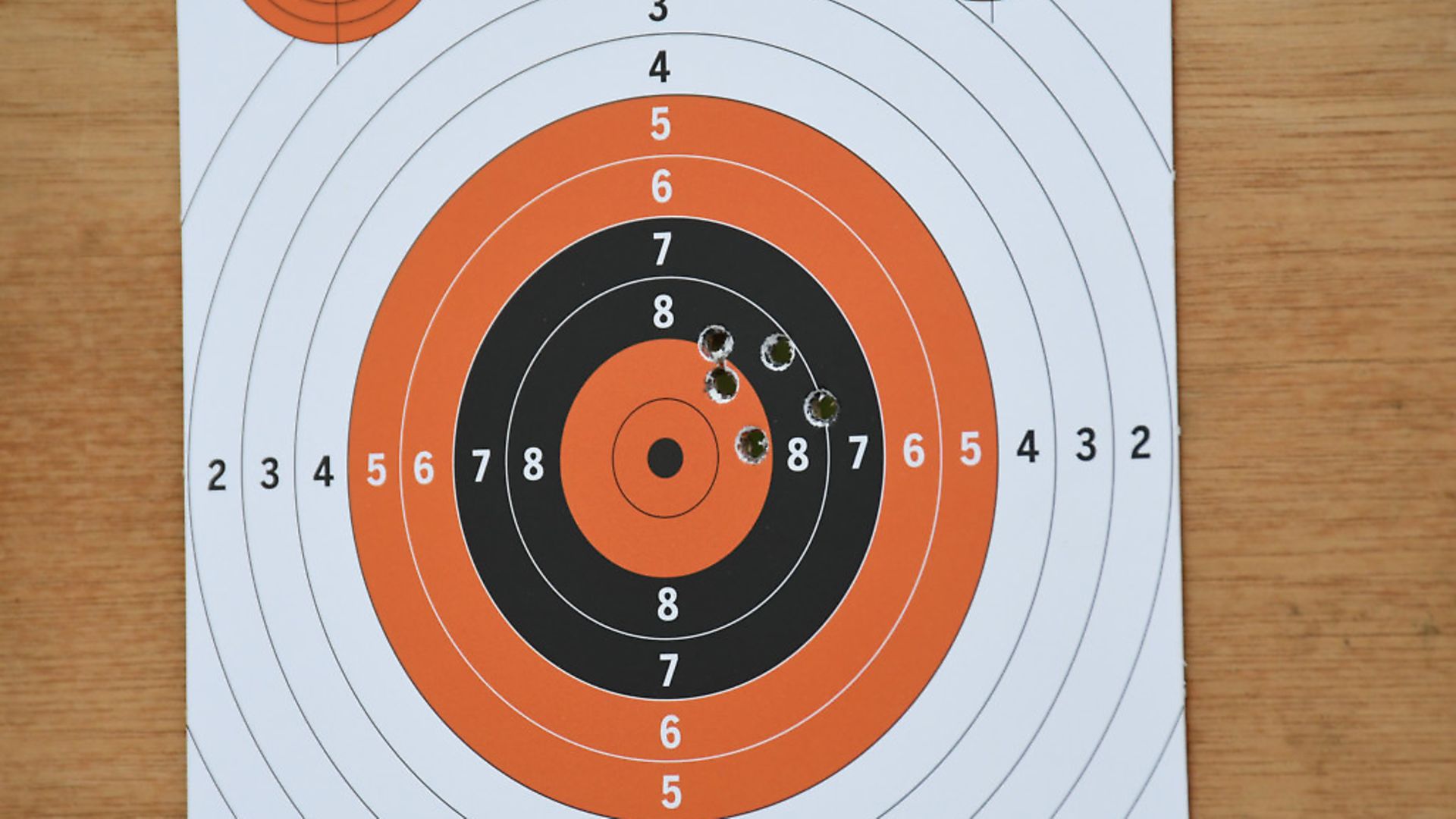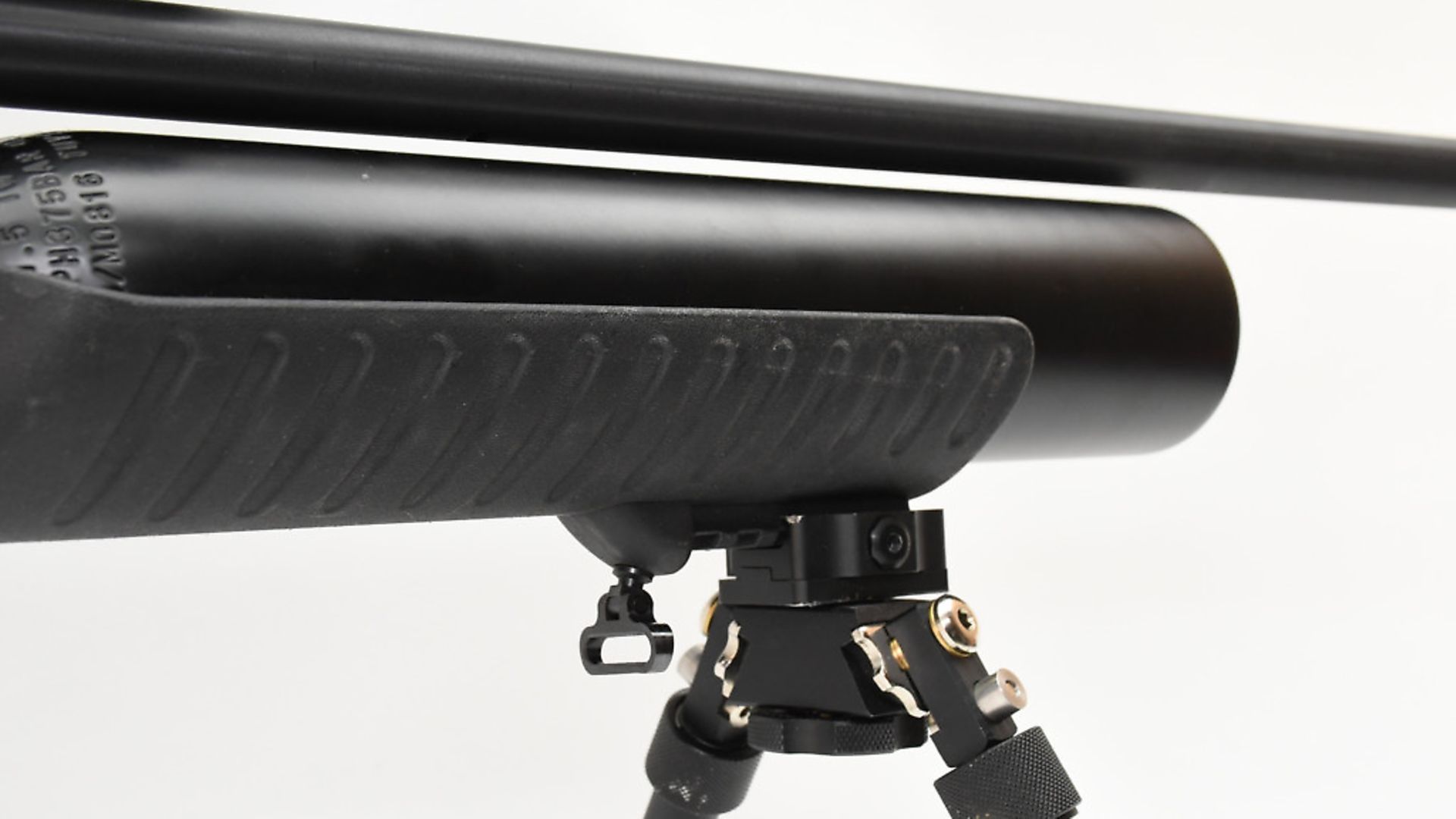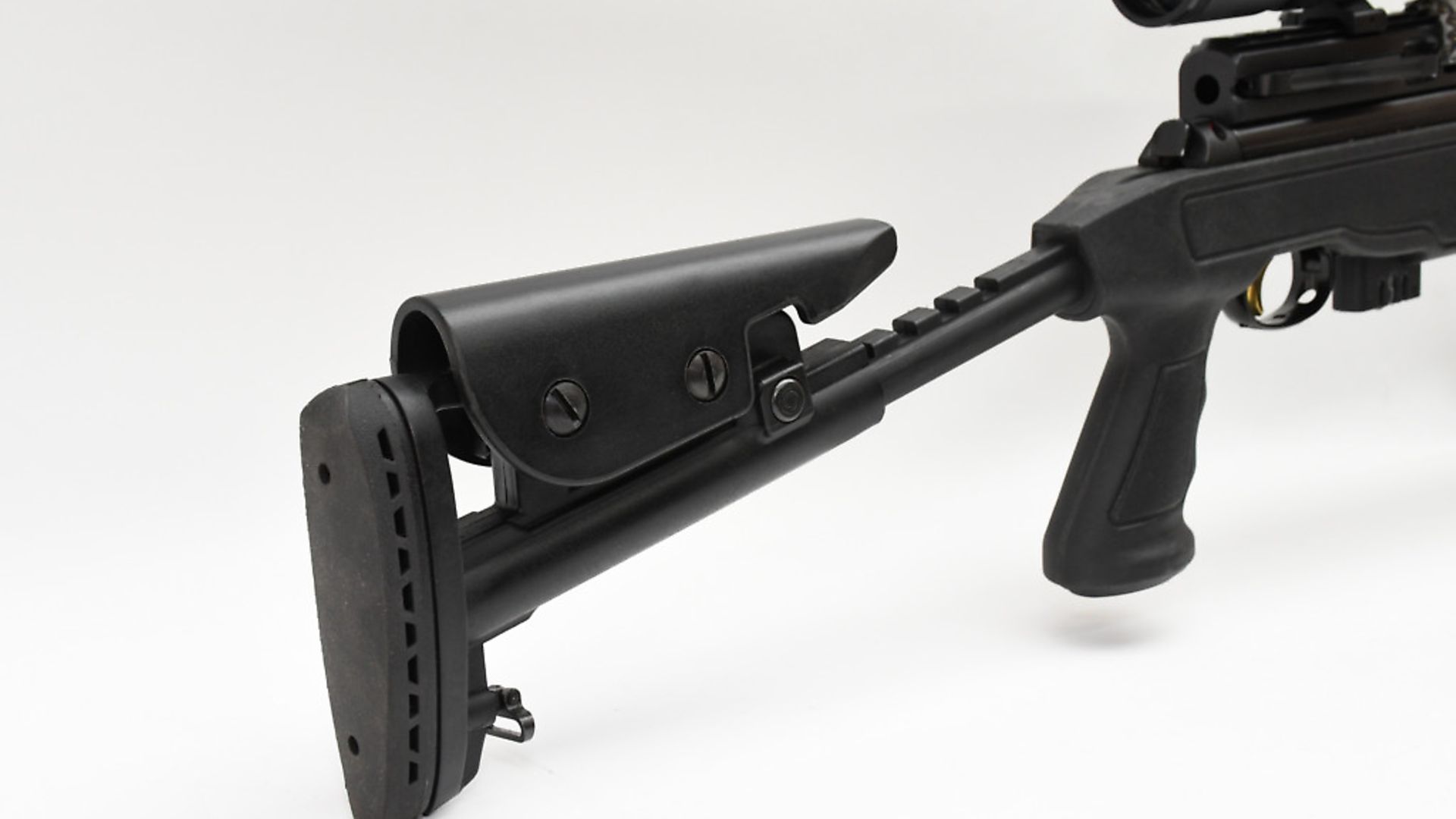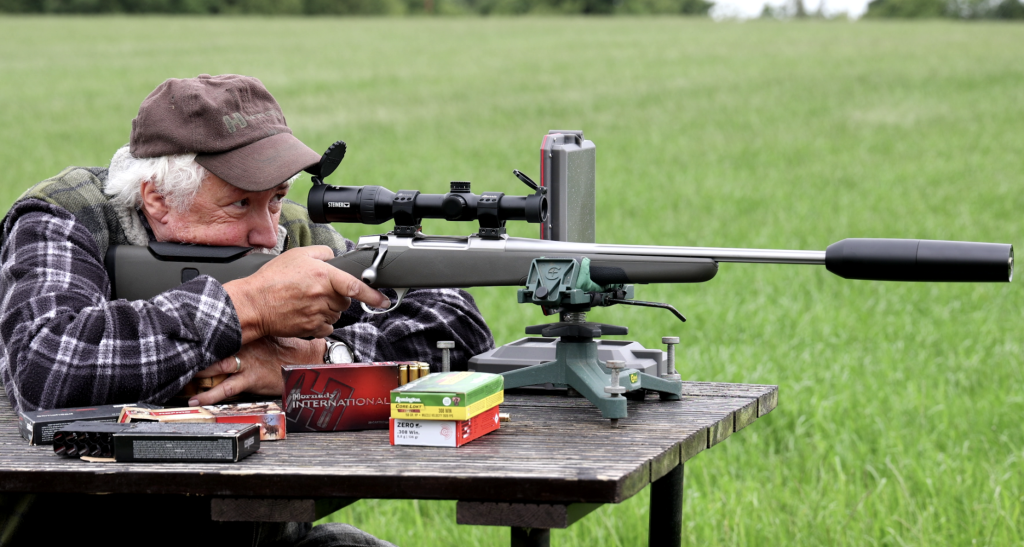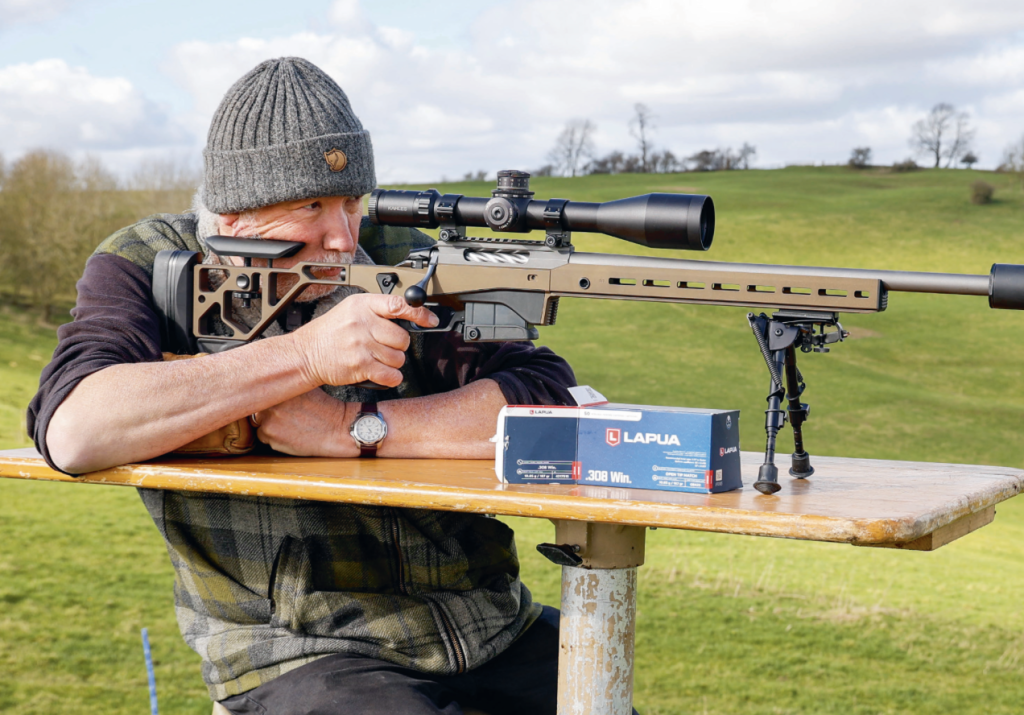Hatsan Nova Tactical QE in .177 – test & review
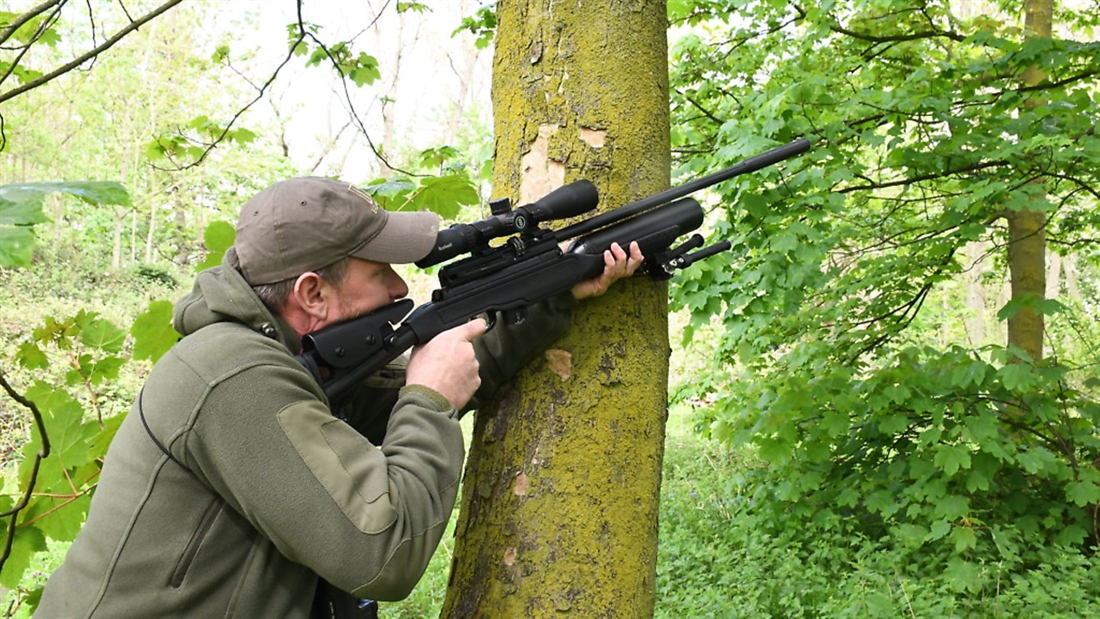
Chris Parkin gets acquainted with the Hatsan Nova Tactical QE FAC air rifle in .177, and discovers a valuable tool offering great value for money!
BRIEF OVERVIEW – Hatsan Nova Tactical QE, FAC air rifle in .177
PROS: Seemingly quirky yet functionally amazingly effective stock geometry; Underside picatinny mounting for bipod; Excellent trigger and reliable magazine; Dual scope mounting rail capability
CONS: The power curve is quite evident but can be worked around in a hunting rifle
VERDICT: The Nova became one of those guns I enjoyed using and had to look more deeply into to properly categorise. My own choice in FAC would a 22 but regardless of calibre, this rifle showcases the capability on offer from Hatsan. Incredibly good value for money all around.
TECH SPECS – Hatsan Nova Tactical QE
Calibre: .177 air (FAC), 24.3ft-lbs average
Barrel: length23.5”/600mm choked with shrouded sound moderator
Overall Length: 48.5”/1230 mm (at 14” L.O.P.)
Length of Pull: 11.5-15.5”/293-394mm
Overall Weight: 7lbs/3.2 kg
Magazine capacity: 10
Stock Material: Polymer with adjustable cheekpiece and length of pull
RRP: £470 Edgar Brothers 01625 613177
IN-DEPTH TEST & REVIEW – Hatsan Nova Tactical QE, FAC air rifle in .177
Ten years ago, Hatsan was one of the lesser known names of the gun trade in general, but it’s great to see how they have progressed in all lines – especially in terms of rifles and airguns. Supply and demand tends to restrict the amount of the most up-to-date models being offered in much rarer FAC format, so the opportunity to use both this Nova and the larger Hercules in 23 and 49 ft-lb formats respectively was exciting.
This month, I’ve decided to look at the Nova Tactical in .177, as it is a little different – all the FAC airguns I have used before have been .22s. The Hercules is an interesting concept, but it’s a beast in terms of size and weight, more akin to a .338 Lapua Magnum centrefire, I kid you not.
Any FAC air rifle, although not specifically restricted in power, does have a realistic limit, needing to stay subsonic. Although higher speeds are possible, lead pellets don’t like to surpass the sound barrier, the supersonic crack is undesirable and at transonic speeds, things get very squirrely with a pellet and that’s why utlra-high-energy guns use larger calibres and heavier projectiles to restrict their top speed.
Fixtures and fittings
The Nova Tactical QE features a fully shrouded 23.5”/600mm barrel within its overall shrouded length of almost 700mm. The shroud is 20mm in diameter with a final 200mm section at the muzzle swollen to 27mm and looks similar to a heavy barrelled rifle with moderator attached.
The QE stands for ‘quiet energy’ – and this is a significant factor because air rifles can get surprisingly loud. Hatsan have conquered that with this efficient moderation set-up, along with a patented anti-knock system to prevent bumps and bangs bleeding any waste air.
The shroud is removable for cleaning if required, but other than taking a look at the internal barrel, I left all well alone. The muzzle threading and crown is all neat with smooth threads to lock the full shroud, slightly tensioned against the face of the receiver to maintain consistent barrel harmonics, with the barrel being slightly choked at the muzzle.
A 500cc buddy bottle (not removable) is slung beneath the barrel, which is filled via a supplied adaptor. There is a side-mounted pressure indicator for backup use, but the ones on your 300 bar diver’s bottle are generally a little more accurate when topping up to the maximum recommended 250 bar fill.
The rectangular profile of the aluminium receiver shows 11mm and 22mm dovetail rails atop for scope mounting with a small ‘bolt’ type arrangement in front of the magazine to lock it in place. Two 10-round mags are supplied; there is a pocket just in front of the steel trigger guard to hold the spare for an undisrupted 20-round hunt in the field.
After you draw back the cocking lever, pushing the bolt forward and up releases the mag, which is held under spring tension and pops out into your hand. Pushing the next mag in recompresses this spring and flicking the ‘bolt handle’ allows the inner probe to lock the mag and its rotational detents, allowing it to index a round each time when the side/cocking lever is operated.
There is a useful anti-double-loading feature that prevents two pellets being accidentally fed into the barrel simultaneously. The 100mm side lever cocks the action, allowing the mag to rotate thereby indexing the next pellet. The lever is straight with no specific handle – and while that’s not a problem, it might have benefitted from a slightly greater separation from the action’s side wall or perhaps a secondary handle to give a slightly more tactile grip.
A semi-automatic safety catch is applied when the action is cycled, so this needs disengaging for each shot, but can be manually re-engaged if the shot isn’t taken. I must admit, I prefer a totally manual safety catch, but I’m not complaining as it is large, tactile and quiet in operation.
The adjustable Quatro trigger unit features a gold-coloured blade with two-stage operation. From the factory, it broke cleanly at just over 900g with a precise, reliable feel which coupled well with the overall ergonomic feel of the rifle.
Fit and finish of all components is basic but neat; the gun might lack lustre, but it’s all mechanically excellent with precise operation, and a simple matt black anodised finish for the aluminium barrel shroud.
Stock opinion
The stock is where the ‘tactical’ bit comes in, and this where you will see some modern militaristic design hallmarks, such as the ambidextrous, underslung pistol grip and the buffer tube tail for butt pad and cheekpiece positioning.
Interestingly, Hatsan have designed their own components, and this has a really handy side effect: it’s mounted on a downward angle and, as length of pull is increased, the cheekpiece drops down from the sightline.
Given the FAC rating, this is unlikely going to be chosen for family plinking use like a sub-12 might be, but it certainly shows clever design from Hatsan which, most importantly, never feels cheap or looks like it’s composed using items from the parts bin!
Length of pull is from 11.5”/292mm to 15.5”/395mm, with the comb height unlocked with a single button. Although this isn’t to my personal taste, it was incredibly comfortable with a slender comb shape that was well-proportioned to the cheekbone.
The butt pad is a simple, firm, 10mm thick pad with lateral ventilation slots. I loved the very subtle and useful angled cut at the heel to lessen the likelihood of snagging on clothes. Cheekpiece height can be locked in place using twin slotted screws, but I never found the need. Frankly, this airgun stock puts quite a lot of centrefires, using cheap aftermarket AR-15 polymer components, to shame. The butt hook is not hand-filling but the underside can be pushed securely into your shoulder and includes a sling swivel, as you’d expect.
The central section of the stock has a boxy profile with minimal finger grooves inlaid into the stipple producing a grippy black surface; 100% practical in my mind. Hatsan have made a smart choice by extending the stock underneath the full length of the buddy bottle for hand support or use on bags. Not stopping at that, they have moulded in a section of Picatinny rail to accept a bipod and added another sling swivel.
I cannot stand a bipod mount pushed back down a fore-end or, worse still, just in front of the trigger guard, offering increasingly less stability as the bipod retreats rearwards. Although not everything from target rifle design is applicable to sporting shooters, the concept of increasing the ‘wheelbase’ as far as possible to boost stability is a sound engineering concept. Furthermore, I’m not totally comfortable with the buddy bottle carrying the bipod mount, applying stress on the valve assembly from which it is fastened.
It’s shootin’ time
So, what’s the gun like to shoot? Well, I rather liked it. First point to mention is that it is not regulated so it will show a more pronounced power curve throughout the air tank’s range, but this is acceptable and not too hard to live with on what has to be considered a pest control tool.
The filling probe slots through the front of the receiver, displacing a polymer bung, and from a 250 bar max fill, I ran an extended test string until power levels diminished significantly. Shooting a few close-range groups to assist my pellet choice for the main test, I settled, yet again with a PCP, on the 10.34gr JSB Diabolo Exact Heavy.
It’s the heaviest .177 pellet, and the most accurate on this occasion. From the topped-up tank, velocity rose from 1015 fps to 1050 fps at shot number 38 before steadily falling to 997 fps at shot 100. Analysing the results and averages of the power curve, as well as verifying results with group position on target, showed little change in group sizes. Towards the end, it was possible to see the drop off in the impact point at 50m.
For close-range hunting, I would have been confident with 100 shots from a single fill but for 30-50m shooting, I would have restricted myself to 60-70m and adjusted my fill pressure to about 230 bar to optimise the power curve for hassle-free use.
Power hovered around the 23-ft-lb mark with a peak of 25.3 ft-lb. For hunting, I think a safe 70-shot string is plentiful, but I will accept some target shooters would consider it laughable. In comparison, my own Weihrauch HW100 in .177 at 11.9 ft-lb shows an extreme spread of 4 fps for 50 shots of the same pellet from a 200 bar fill, but that’s a different power scenario and about double the price!
That’s right, the Hatsan Nova Tactical is £470 and for an ultra-quiet low ricochet risk pest control tool, this represents outstanding value in my opinion. Power curve adjustments aside, what really made it stand out for me was the pleasure of shooting the rifle and its value as a training tool, regardless of energy on target.
The polymer stock and bipod were very comfortable, allowing complete repetition of centrefire or rimfire technique. Any FAC airgun is going to use comparatively more air, especially in the less efficient .177 calibre, which is pretty much limited to 24 ft-lb due to pellet weight and the necessity to remain subsonic.
Changing to a .22 would see this rise or allow a greater shot count. The longer barrel aids efficiency and lessens noise, giving greater expansion space for gases, but this must be carefully balanced with pellet friction in the bore before it begins slowing down before exiting the muzzle.
I can’t see them selling huge volumes of Nova FAC rifles compared to sub-12 ft-lb units, but it illustrates to me the capability and advancing quality of Hatsan, who have spotted trends in the fashion for ‘tacticool’ design and have applied them well in this very affordable FAC air rifle. Even unregulated, I’m happy to use the rifle and have done so more extensively than some guns I have had in to test.
I cannot wait to see the latest updated models after lockdown, which may well also become available in FAC format, if the market calls for one. If it does, I’m sure Hatsan are really going to deliver the goods and perhaps knock a few of the airgun world’s prima donnas off their pedestals?
Related Articles
Get the latest news delivered direct to your door
Subscribe to Rifle Shooter
Elevate your shooting experience with a subscription to Rifle Shooter magazine, the UK’s premier publication for dedicated rifle enthusiasts.
Whether you’re a seasoned shot or new to the sport, Rifle Shooter delivers expert insights, in-depth gear reviews and invaluable techniques to enhance your skills. Each bi-monthly issue brings you the latest in deer stalking, foxing, long-range shooting, and international hunting adventures, all crafted by leading experts from Britain and around the world.
By subscribing, you’ll not only save on the retail price but also gain exclusive access to £2 million Public Liability Insurance, covering recreational and professional use of shotguns, rifles, and airguns.
Don’t miss out on the opportunity to join a community of passionate shooters and stay at the forefront of rifle technology and technique.



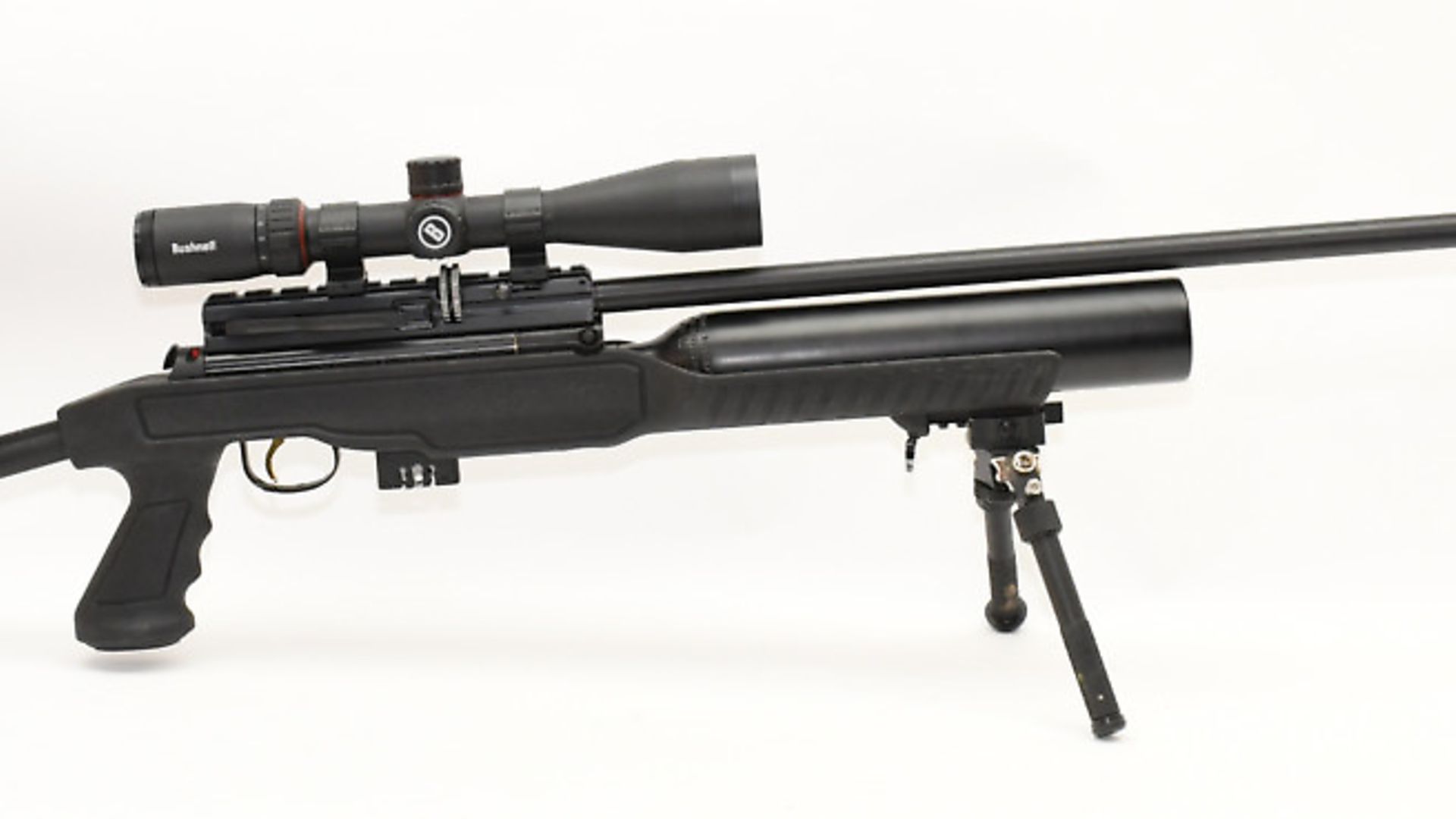

![[Do not use] Hatsan Nova 11](/app/uploads/sites/5/2025/01/hatsan-nova-11-.jpg)
